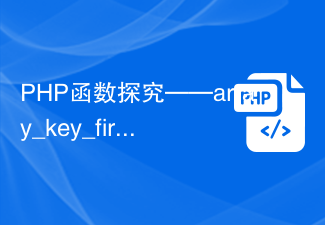Internet payment has become a part of modern life, but as its convenience is increasingly recognized, people are also paying more and more attention to its security. Before exploring the security of Internet payment, we need to understand the basic principles of Internet payment and related security measures.
Basic principles of Internet payment
Internet payment refers to electronic payment transactions conducted through the Internet. It uses e-commerce technology and network transmission technology to transmit the financial information of buyers and sellers to payment institutions, and the payment institutions complete the settlement and clearing of transactions. Internet payment methods include credit card payment, online banking payment, third-party payment, etc.
Credit card payment refers to payment using a credit card. The buyer needs to enter credit card information to complete the payment. Online banking payment refers to payment through the bank's online banking system. The buyer needs to enter the bank account number and password to complete the payment. Third-party payment refers to the use of a third-party payment institution for payment. The buyer needs to register and recharge the account of the third-party payment institution, and then pay through the account.
Security Measures for Internet Payment
To ensure the security of Internet payment, payment institutions have adopted a variety of security measures and technical means. The following are some common measures:
- SSL Secure Connection
SSL (Secure Socket Layer) secure connection is one of the most common security technologies in Internet payments. It uses encryption technology to protect transmitted information and prevent information from being stolen or tampered with during transmission. Many Internet payment websites use SSL secure connection technology.
- 3D security authentication
3D security authentication means that during the Internet payment process, buyers need to enter additional authentication information such as passwords or SMS verification codes to ensure payment information authenticity and safety. Many banks and payment institutions have adopted 3D security authentication technology.
- Risk control system
The risk control system refers to the use of technologies such as data analysis and artificial intelligence to monitor and screen payment transactions in real time to prevent risks such as fraud . Many payment institutions have their own risk control systems.
Security Problems and Solutions in Internet Payment
Although Internet payment adopts a variety of security measures, there are still some security problems. The following are some common problems and solutions:
- Theft of account and password
Theft of account and password may lead to leakage of payment information and even property losses. The solution is to change your password promptly, enable two-step verification, etc.
- Phishing emails and text messages
Phishing emails and text messages may trick buyers into entering personal and payment information. The solution is to be wary of phishing emails and text messages and avoid clicking on links or downloading attachments.
- Payment platform security issues
When the payment platform itself has vulnerabilities or is attacked, payment information may be stolen. The solution is to choose a safe and reliable payment platform and avoid using unknown or unreliable payment platforms.
Summary
Internet payment has become an indispensable part of modern life, but with it comes the constant emergence of payment security issues. To stay safe in Internet payments, buyers should choose a formal and secure payment platform, do not blindly trust emails or text messages from unknown sources, and regularly change passwords and enable two-step verification to prevent account theft. At the same time, payment institutions need to continuously strengthen security measures and technical means to ensure the security and stability of payment information.
The above is the detailed content of Research on Internet payment security. For more information, please follow other related articles on the PHP Chinese website!
 Go语言简介:探究Go就是Golang吗?Feb 28, 2024 am 11:09 AM
Go语言简介:探究Go就是Golang吗?Feb 28, 2024 am 11:09 AMGo语言简介:探究Go就是Golang吗?Go语言(也被称为Golang)是由谷歌(Google)开发的一种开源编程语言,于2007年开始设计,2009年正式发布,旨在提高程序员的工作效率和编程快乐度。尽管很多人称其为Golang,但其官方名称仍是Go语言。那么,Go和Golang究竟是同一种语言吗?为了解答这个问题,让我们深入探究一下这门语言的背景、特点和
 PHP数组的性能优化技巧探究Mar 13, 2024 pm 03:03 PM
PHP数组的性能优化技巧探究Mar 13, 2024 pm 03:03 PMPHP数组是一种非常常见的数据结构,在开发过程中经常会用到。然而,随着数据量的增加,数组的性能可能会成为一个问题。本文将探讨一些PHP数组的性能优化技巧,并提供具体的代码示例。1.使用合适的数据结构在PHP中,除了普通数组外,还有一些其他数据结构,如SplFixedArray、SplDoublyLinkedList等,它们在特定情况下可能比普通数组性能更好
 PHP函数探究——array_key_first()Jun 21, 2023 pm 12:41 PM
PHP函数探究——array_key_first()Jun 21, 2023 pm 12:41 PMPHP函数探究——array_key_first()在PHP7.3中,官方新增了一个数组函数——array_key_first()。这个函数能够返回数组中第一个键名。在本文中,我们将深入探究这个函数的用法和场景。语法array_key_first(array$array):mixed说明array_key_first()函数接收一个数组参数,并返回
 Golang程序能否被反编译探究与解析Mar 18, 2024 pm 09:42 PM
Golang程序能否被反编译探究与解析Mar 18, 2024 pm 09:42 PM【反编译Golang程序:探究与解析】近年来,随着Golang(Go语言)在软件开发领域的广泛应用,人们也越来越关注Golang程序的安全性。其中一个重要的安全考量就是程序的反编译问题。在实际应用中,有些开发者会担心自己编写的Golang程序是否容易被反编译,进而泄露代码或关键信息。本文将探究Golang程序被反编译的实际情况,并通过具体的代码示例展示相关技
 PHP魔法函数探究:__clone()Jun 19, 2023 pm 10:28 PM
PHP魔法函数探究:__clone()Jun 19, 2023 pm 10:28 PM在PHP的面向对象编程中,除了常规的用于创建对象的构造函数(__construct),还有很多针对对象操作的特殊函数,这些被称为“魔法函数”。其中,一个非常重要的魔法函数就是__clone()。在本文中,我们将对此进行探究。一.__clone()是什么__clone()是PHP中一个特殊的函数,用于在对象被复制时调用。它的作用等同于对象的克隆,也就是复制一
 PHP函数探究:array_search()Jun 21, 2023 am 09:54 AM
PHP函数探究:array_search()Jun 21, 2023 am 09:54 AMPHP是一门广泛应用于Web开发的脚本语言,其强大的函数库为开发者提供了很多方便快捷的方法。其中,array_search()函数就是其中一个功能十分强大的函数。在PHP中,array_search()函数用于在数组中查找给定值,并返回该值对应的键名。其基本语法为:array_search($needle,$haystack,$strict=fals
 Go语言中字符串拼接的实现方式探究Mar 12, 2024 pm 09:24 PM
Go语言中字符串拼接的实现方式探究Mar 12, 2024 pm 09:24 PMGo语言中字符串拼接的实现方式探究在Go语言中,字符串是不可变的,即一旦创建后就无法直接修改其内容。因此,在进行字符串拼接时,需要特殊的处理方式来保证效率和性能。本文将探究Go语言中字符串拼接的实现方式,包括常用的几种方法以及它们的特点和优劣。同时,我们也会提供具体的代码示例来帮助读者更好地理解。一、使用加号“+”进行字符串拼接最简单的字符串拼接方式是使用加
 Java 数据输入方法探究Mar 29, 2024 pm 01:54 PM
Java 数据输入方法探究Mar 29, 2024 pm 01:54 PMJava数据输入方法探究在编程过程中,数据输入是一个非常常见的操作。在Java中,有多种数据输入的方法,比如通过控制台输入、文件输入、网络输入等。本文将就Java中的数据输入方法进行探究,并提供具体的代码示例。控制台输入在Java中,通过控制台输入是最简单直接的方法。可以使用Scanner类来实现从控制台接收用户输入的数据。下面是一个示例代码:import


Hot AI Tools

Undresser.AI Undress
AI-powered app for creating realistic nude photos

AI Clothes Remover
Online AI tool for removing clothes from photos.

Undress AI Tool
Undress images for free

Clothoff.io
AI clothes remover

AI Hentai Generator
Generate AI Hentai for free.

Hot Article

Hot Tools

EditPlus Chinese cracked version
Small size, syntax highlighting, does not support code prompt function

ZendStudio 13.5.1 Mac
Powerful PHP integrated development environment

VSCode Windows 64-bit Download
A free and powerful IDE editor launched by Microsoft

SublimeText3 Mac version
God-level code editing software (SublimeText3)

Dreamweaver Mac version
Visual web development tools





